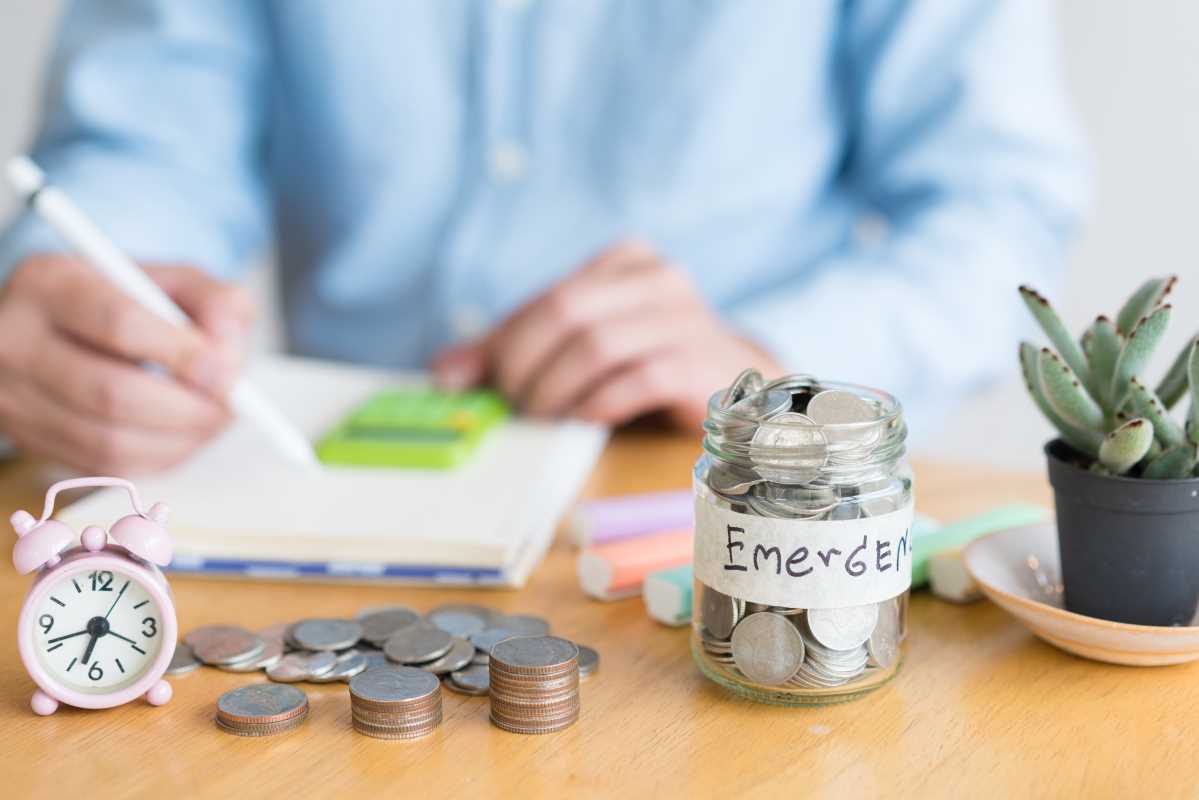Picture this: you’ve been carefully building your emergency fund for months, diligently setting aside a little each paycheck. You’re feeling secure, like you could handle whatever life throws at you. Then an unexpected expense hits: a major car repair, a medical bill, or maybe a surprise home repair. Before you know it, your emergency fund is completely drained, and you’re left staring at an empty account. Don’t panic—this happens to the best of us. Let’s walk through how to refill your emergency fund after it’s taken a hit.
Step 1: Take a Deep Breath
First things first: don’t freak out. It’s totally normal for unexpected expenses to knock your emergency fund off course. The key is not to let that little setback spiral into a bigger financial disaster. If your fund is drained, it’s okay. Now is the time to take stock, calm your nerves, and figure out a plan. The sooner you act, the sooner you can get back on track. So take a deep breath, remind yourself you’ve got this, and let’s start refilling that emergency fund—one step at a time.
Step 2: Assess Your Current Situation
Before diving into action, take a step back and assess where you stand financially. How much did your emergency fund take a hit, and how much do you need to refill it? If you’ve never really had an emergency fund (oops), now’s a great time to start from scratch. If you’ve only drained a portion of it, figure out how much you want to replenish before your next unexpected event happens.
Once you know the total amount you need, break it down into smaller, more manageable chunks. Trying to save $1,000 in a month sounds daunting, but saving $250 each week? Totally doable! Create a plan based on what’s realistic for your income and expenses, and remember, every little bit counts.
Step 3: Reevaluate Your Budget (and Trim the Fat)
If your emergency fund is empty, it’s time to take a fresh look at your budget. Maybe you’ve been living large, ordering takeout too often, or spending more on entertainment than you realized. This is the moment for a little financial spring cleaning. Take a few minutes to evaluate where you’re spending money and identify areas to cut back. Consider trimming the fat from discretionary spending:
- Maybe that daily latte can be swapped for homemade coffee.
- A few less nights out at the movies could free up cash.
- Canceling subscription services you haven’t used in months can add a surprising amount to your savings.
Every dollar you save now is a dollar that can go straight into rebuilding your emergency fund.
Step 4: Find Extra Sources of Income (Without Starting a Side Hustle)
Now, let’s talk about how to make refilling your emergency fund easier by finding extra sources of income. No, you don’t need to start a fancy side hustle selling custom t-shirts (unless that’s your thing). Instead, look at practical ways to boost your income temporarily while you work on rebuilding.
Sell Unused Items: Your closet is full of clothes you haven’t worn in years, your garage is overflowing with old gadgets, and your bookshelf might be hiding a stack of books you’ll never read again. Take a weekend to declutter and sell those items. Not only will you make some extra cash, but your house will also feel lighter and less cluttered.
Freelance or Pick Up Extra Hours: If you’ve got skills that others need (like writing, design, or even babysitting), consider picking up some freelance work. Or if your job allows for overtime, consider taking on a few extra hours to bulk up your paycheck for the month.
Cash Back and Rewards Programs: If you’ve been ignoring the rewards points or cashback programs tied to your credit cards or apps, now is the time to give them some love. Redeem points or cashback rewards and funnel that extra money straight into your emergency fund.
Step 5: Make Rebuilding the Emergency Fund a Habit
Refilling your emergency fund is a short-term project, but maintaining it should be a long-term habit. The goal isn’t to deplete your fund again the next time something unexpected happens. As soon as you’re able to restock that account, make sure you continue putting a small portion of your income into it each month. Even if it’s just $25 or $50 a paycheck, consistency is key.
If your budget allows, consider setting up automatic transfers from your checking account to your emergency fund. Out of sight, out of mind—but in a good way! With money automatically going into the fund, you won’t have to think about it and will steadily grow your cushion.
Step 6: Reward Yourself (Sort Of)
Look, we all need motivation, especially when it comes to long-term financial goals like refilling an emergency fund. You’ve worked hard to rebuild your safety net, so it’s time to reward yourself in a way that doesn’t undo all your good work. Maybe treat yourself to a small, inexpensive indulgence—like a night out at a budget-friendly restaurant or a fun activity that’s low-cost but high in enjoyment.
The key is to give yourself a little win, so you feel motivated to keep going without blowing your budget. After all, you’ve earned it!
Step 7: Revisit Your Emergency Fund Strategy Regularly
As life continues to throw curveballs (because, let’s face it, it will), make sure to revisit your emergency fund strategy regularly. If you’re still rebuilding, keep track of your progress and adjust your budget as necessary. Once your fund is back to full capacity, make sure to maintain it at that level by adding a little here and there every month.
Also, remember that emergencies come in all shapes and sizes. If you get through one unexpected event without your funds, increasing your cushion’s a good idea. Life is unpredictable, and the goal is to have your fund ready for whatever comes next, no matter how big or small.







